#dragon mythology
Text
About Chinese Dragon Mythos
While looking up myths and folklore about dragons with fur and/or feathered wings, I came across these texts. I happen to be fluent in both scripts of the Chinese language and was able to pull information up to share these with.
DISCLAIMER: I'm just looking up old Chinese writings and translating them, in no way, shape, or form do I believe they are the gospel. I will eat anyone that tells anyone they are not dragons for being different than their ideal concept of dragons.
In <Compoendium of Materia Medica : Winged>(1)
"龙者鳞虫之长。王符言其形有九似:头似驼,角似鹿,眼似兔,耳似牛,项似蛇,腹似蜃,鳞似鲤,爪似鹰,掌似虎,是也。其背有八十一鳞,具九九阳数。其声如戛铜盘。口旁有须髯,颔下有明珠,喉下有逆鳞。头上有博山,又名尺木,龙无尺木不能升天。呵气成云,既能变水,又能变火。"
Translation available with my edits/addons in brackets
The dragon is the king of reptiles, Wangfu say it is similar to the nine animals: Head like a camel, the horns of a deer, the eyes of a rabbit, ears like cattle, [snake-like neck], belly like clam, the scales of a carp, the claws of a hawk, the palm of a tiger. There are 81 scales on the back[, which is a positive number of 9x9(2)]. Sound is like beating gongs. A beard near the mouth, a pearl on chin, [inverted scale] under the neck. [On the dragon's forehead there is a shape like Mount Bo(3), also called chǐ mù(4), without chǐ mù, a dragon cannot fly. It's breath becomes clouds], It can produce water, and it also generates fire.
- from https://www.quora.com/What-is-the-origin-of-the-dragon-in-Chinese-mythology?share=1
On Responsive Dragon/Ying long 應龍
As documented in “Tales of strange matters” (shuyiji) “horned dragon in 500 years, a thousand, and they become yonglong” it is a pinnacle of “(shape)shift dragon”, therefore it grew wings.
It served under the yellow emperor, and during the event of The Great Yu Subdue the Flood, the yinglong, with one great sweep of its tail, redirect and created a new river. This divine dragon is also named yellow dragon, yellow dragon is yinglong. Yinglong has feature of born with a pair of wings, scaled body spiked spine, large and long head, lip, nose, eyes, ears are all small, large eye frame, high eyebrow, sharp teeth, protrude forehead, thin neck large belly, long tail, four strong limbs, as if a winged alligator.
You can often see depictions of yinglong on Warring State era jade sculptures, Han dynasty's stone sculptures, tapestry, and painted utensils. "Dragon has nine hatchlings, every one of them unique." In ancient times, nine is an extremely high number, in here, it is not the exact number. It is a representation that the divine dragon has many children. And in the early era, the divine dragon also includes zhulong (candle dragon), goulong (hook dragon), kuilong, and there are also the four spirits.
On Blue Dragon/Qing Long 青龍
《张果星经》云:“又有辅翼,则为真龙”,认为有翼方是真龙。如西周有大量身负羽翼龙纹器皿,乃至青龙在先秦纹饰中也有羽翼,一说青龙为祖龙。封建时代,龙是皇权的象征,皇宫使用器物也以龙为装饰。
<Zhang Guo Star Sutra> spoke of "with the attachment of wings, it is a true dragon". It sees that a dragon with wings is a true dragon. The Western Zhou dynasty have a great number of utensils and containers that have depictions of loong with feathered wings painted on them. There is a saying that the blue loong is the ancestor dragon. In the ancient Chinese feudal era, the dragon is a symbol for imperial power. Within the palace, utensils and containers are decorated with dragons
Ben Cao Gang Mu (《本草纲目》 (Compendium of Materia Medica)) is the most complete and comprehensive medical book ever written in the history of traditional Chinese medicine. Compiled and written by LI Shi-zhen (1518~1593), a medical expert of the Ming Dynasty (1368-1644) over a period of 27 years. The first draft was completed in 1578 when Ming China was at its imperial heyday https://en.unesco.org/silkroad/silk-road-themes/documentary-heritage/ben-cao-gang-mu-bencaogangmu-compendium-materia-medica
9 is a lucky number for the Chinese, due to its sharing tone with "long-lasting", and being the biggest number before it is reset (from 9 to 10).
Mount Bo, boshan. I believe it is specifically talking about this mountain in China and its unique protrusion shape.
chǐ mù, literal translation "ruler wood". I could not find a actual translation of the word
Another translation/review of the text sample is available here
Elements of culture in Ch’ing Dynasty: the Australian Museum Collection
(with some supplementary material)
By Baohua Li, Yikun Li
#chinese dragon#ancient chinese#Dream Dragon Posting#translation#dragon mythology#draconic#dragonkin#dragonkind#draconity#alterhuman#other+#alterbeing
70 notes
·
View notes
Text
Dragons Around the World (part 2)
Part 1
Asia: basis of the Eastern Known Dragons

Ch'ien T'ang of China; chief river god, said to have cause a 9+ year flood
K'vei of China; primitive original dragon
Ying Lung of China; guardian of the waters of earth and associated with the clouds of heaven
Yellow Dragons of China; a class or group of dragons which include Lu Tung-pin and Svara
Lung of China; generic dragons, said to control the weather and water, brings storms and floods, rule various bodies of water
O Goncho of Japan; white dragon said to be living near the royal family in a deep pool, said to change into a golden bird every 50 years; has a wolf lile cry when heard denotes famine
Raitro of Japan; a child with the power to control rain, changed into a white dragon upon reaching adulthood
Ryujin of Japan; dragon god of the sea that controls ebb and flow
Yofune Nushi of Japan; caused storms and preyed on fishermen; June 13th was a day used to sacrifice a maiden to appease it
Zennyo of Japan; a fire goddess woman with the attributes of a dragon
Tobi Tatsu of Japan; their version of the Ying Lung
Kinabalu of Mount Kinabalu, Borneo
Yam Boy of Korea; a boy who turned yams into gold, later himself turned into dragon
Bakunaua of the Phillipines; the eater of moons, believed to cause eclipses, noises made to scare it off
Naga of South Asia (unspecified); half human half snake and can transform fully either way; believed to control weather
Nyan of Burma, Bengal, and India
Vasuki of India; similar to the Naha
Vritra of India
Europe: most known Western Dragons

Brinsop of England
The Deerhurst Dragon of England
Drachenstein of Norse Mythology
Fafnir of Norse Mythology/Scandinavia; cursed with greed
Hydra of Greek and Norse Mythology
Ladon of Greek Mythology; protects Hera's golden apples
Medea of Greece
Nidhogg of Norse Mythology; symbol of chaos
Ouroboros of Greek Mythology
Peneznysmij of Lithuania
Puk of Germany; a small household spirit believed to bring stolen goods to their masters
Svara of Armenia
La Tarasque of France; daughter of the Leviathan and Onachus (a bison beast that burns everything it touches)
Vishop of Armenia
Wantley Dragon of England
Zaltys of Lithuania; guardian of homes
Drakon Kholhikos of Georgia; guardian of the Golden Fleece, soothed by music
Python of Greek Mythology; Hera's pet and daughter of Gaia (primordial goddess of Earth)
Stoorworm or Jormungandr of Scotland; the world serpent
Zmey of Slavic Mythology; turns into human form to seduce humans before enslaving them
Russia (wasn't sure whether to put as Asia or Europe since it's kinda both)
Veles
#witchblr#witches of tumblr#baby witch#witch community#dragons#world mythology#dragon mythology#kaijune
40 notes
·
View notes
Note
I love the Targaryens, but I never really got the impression that they thought women were equal to men. Don’t get me wrong, Andal culture is extremely sexist and patriarchal, but the Valyrians/Targs were not written like the culture of the Dornish/Rhoynar who do believe women are equal to men. I think the Targaryens definitely gave their women much more freedom and respect than Andals did to their women, but in the end, men were still considered the final authority.
So I think the Targaryens were more progressive than the Andals but less than the Rhoynar. Aegon I did conquer Westeros alongside his sisters, but in the end, it is only him that is referred to as the conqueror, while his sisters are not. I also got the impression that Aegon was the one who made all the final decisions even though Visenya was the eldest. So that’s my opinion what do you think?
I think both similarly and similarly: there's the fact that both Valyrian women and men flew out to Valyrian outposts to control them. It wasn't a total democracy nor did Valyria think women were perfectly equal to men, but they were leagues better and more "progressive" than Westeros.
I would not use the word “progressive” as an absolute or an accurate term for Valyria because:
Valyria developed into a slave-state and practiced enslaving people
the 40 dragonlord families seemed to have lead the entire society (there were nonddragonriding noble and common families), thus making this an oligarchy
It’s still through the man that a child inherits their surname, as we know Aegon, Rhaenys and Visenya’s mother, Valaena, was a Velaryon. The Targ family also was inherited by its men, and Aegon I had to marry his oldest sister in Targ tradition and perform his duties. Then there is the fact that Valyrian men (mostly the sorcerers) can have multiples wives (polgyny); nothing is being said about women having multiple husbands (polyandry)
and so "progressive" puts a modern political value on an ancient people and that implies that the Valyrians and early Targs were studious and aware of patriarchal and other systematic oppressions--trying uproot society from the ground up for altruistic deeds (maybe the women after Aegon I conquerors Westeros, but that’s part of the group, not the whole).
Again, I’d just say the Valyrians were better in this one regard--gender. The Targs and Valyrians are still more about power than altruism or perfect equality, like 90% of every other person/group in power in this system and world. Until Dany, of course. What makes the Targs-as-Westerosi-rulers different from their ancestors is that they did not colonize nor run an imperialist state; they merely conquered and ran a feudal state.
Let’s also then say that the Targs/Valyrian dragon-riders provide a means of social change in Westeros because their traditions, link to dragonriding, and the looser restrictions on women gives more of its members a bit of perspective and distance. Several notable members always have had this distance partially based on the fact that they are rulers trying to maintain their rule, but also because they are a people who are also foreign in culture and ID to the Westerosi nobles. Really, it’s the Faith of the Seven and the patriarchal traditons of the First Me and the Andals which create that ideological divide.
A Kinda-Digression about Dragons
Dragons are usually associated and stand in for untamed nature and chaos (disorder), or a huge force that ushers in a great change by clearing out what is before. A creature or a force that relentlessly consumes those things in its wake. a challenge that the hero must overcome or get through to obtain In Greek myth, the serpent Ladon twisted himself the tree in the Hesperides’ Garden of the and guarded the tree’s golden apples. But they also can be the instruments of life giving and strength, as with Chinese dragons who are repsponsible for giving life-saving--or life-ruining--rains, or are made and intrinsically tied to the weather and the elements:
The Chinese dragon, lung, represents yang, the principle of heaven, activity, and maleness in the yinyang of Chinese cosmology. From ancient times it was the emblem of the imperial family, and until the founding of the republic (1911) the dragon adorned the Chinese flag.
They are raw, overwhelming power itself--while also embodying grace and balance-maintenance.
The fact that women could ride dragons would automatically bump them up in a society that derives its power and identity through dragon-riding, even though only a section of Valyrians actually rode dragons--the 40 “dragonlord” families. this section fought for more influence and dominion over the Valyrian Freehold--the official name for Valyria and its territories. (The Velayrons and Celtigars historically were not part of the dragonriding families in Old Valyria).
The Valyrians had no kings but instead called themselves the Freehold because all the citizenry who held land had a voice. Archons might be chosen to help lead, but they were elected by the lords freeholder from amongst their number, and only for a limited time. It was rare for Valyria to be swayed by one freeholding family alone although it was not entirely unknown either.
(A World of Ice and Fire, pg. 13)
We don’t officially know if women could own land in their own right and autonomously and lead their families but it is likely -- dependent on circumstances where the male was unfit or dead and there would be less resistance or room to depose them.
Landholding was and remains a key defining part of being a citizen and having the right to vote when there was some form of voting allowed. Giving military commands and participating in government from the Romans of the Republic to the first leaders of the U.S. and their own ancestors who settled and colonized the Americas.
Since women rode dragons, they definitely had a part in Valyrian expansion and imperialism (in the way that the Romans were imperialists, not 19th-20th century Europe and the U.S.), which also means that women had similar real, substantive political power as their male counterparts and particpated in govermental activities. The wars & using dragons to win them, after all, made Valyria as powerful as it was and dragons and the ability to ride them--symbolically, psychologically, culturally, etc. would have made the basis of their moral & aesthetic values. Again, they controlled Valyrian outposts as leaders as well.
So I think that Valyrian women could own land (and thus vote) in their own right, otherwise, how can they participate in expansion fully and maximize the use of their dragons?
Jaenara Belaerys rode her dragon Terrax, alone, to Sothoryos and didn’t come back until three yeas passed. We don’t officially know if she was weird even for the less-gender-restrictive Valyrians, or if women enjoyed having power and authority even while absent enough for her to expect that she’d still be welcome back into society. But I lean towards the latter.
Read this thread to start contemplating, if you want.
#the valyrians#old valyria#asoiaf asks to me#valyria#valyria vs westeros#the dragonlords#jaenara belaerys#terrax#jaenara and terrax#dragon mythology#mythology#the targaryens#the valyrian freehold#asoiaf
10 notes
·
View notes
Text
I’m currently spitballing a story involving a wish granting dragon and trying to find mythological stories to help get some basis/inspiration. If anyone has some reference or thoughts, please feel free to share them!

2 notes
·
View notes
Text

‘Fierce Night Fury’
i cannot possibly be the only one who wanted my own night fury, right? i’m on a mission to design one in blender so we’ll see how that goes in the near future.
but anywho, super happy with this piece, and anyone who knows me can tell i like dragons a lot in general. i wanna make another version of this too and embroider (am i using this word right?T-T) it on a hoodie.
needless to say, i’m a little obsessed with this.
#graphic design#sketchbook#tattoo artwork#artists on tumblr#digital art#dragon mythology#illustrators on tumblr#instagram artist#my art style#logo design#dragontattoo#how to train your dragon#httyd#httyd toothless#httyd fanart#night fury#light fury#dreamworks#fanart#xaria's favourites#tattoo ideas#creative logo
19 notes
·
View notes
Text
Personal RP Dragon Characteristic Lore

The Dragon Lore and General Characteristics in my Dragon RP come from a variety of researched places, such as different real ancient cultural symbolisms of the species, to books, and games such as Lord of the Rings, DnD Dragons, and a look at the symbolism behind fire, itself. Of course, I add my own modern twist to it with them wearing human guises and fitting into modern day society.
Dragons are a symbolism of power, confidence, determination, the beginning and the end, transformation, intelligence, wealth, royalty, prosperity, and undeniable protection.
Taking those things in mind, those are part of the root core instincts that are within my characters: ie - Devrim, since this is his blog. He tends to come off with a very confident air about him, and he loves that sense of ‘royalty’ and wealth that his family holds for him, where he can sort of walk around and get whatever he wants because of his family name in town. He likes expensive clothes and that lifestyle in New York City where he lives.
He is also very intelligent even for his age of 17. He comes across as quick witted and he is, but he is impulsive and emotional, which also falls into the fact, that he IS a teenager with conflicting emotions, and the fact that his genetics are those of a FIRE Dragon.
Fire symbolizes passion, ferocity, strength, transformation, cleansing/purification, anger, warmth, destruction, warmth, and love, so all that is in him, too.
He is extremely loyal and protective to those he considers in his ‘group,’ and he likes to continue to add more people to his ‘group,’ do to his hoarding instincts, too, and his pull to power, even though, Devrim does not realize he is doing this or that it is the subtle reasoning. He just likes being loved - a surefire difference between him and his ruthless father, who likes holding power through fear. The people that are in his ‘friends’ group, actually ‘love him,’ and it does built up his sense of self esteem and ‘power,’ but he would also do anything for them.
Devrim is biologically a Female Dragon. In numerous places of Dragon Lore Tiamat, is the Goddess Dragon. She is the creator Goddess, and is considered in a lot of places ruthless, but an absolute protector, as well. She appears in Mesopotamian Mythology, and shows up in a lot of games that use her lore, such as DnD.
“the primordial dragon called Tiamat (cognate to the Hebrew tehom) in the Babylonian epic of creation.”
“The Chaldean dragon Tiamat had four legs, a scaly body, and wings, whereas the biblical dragon of Revelation, “the old serpent,” was many-headed like the Greek Hydra. Because they not only possessed both protective and terror-inspiring qualities”
So, I’ve taken that lore and use it in my Lore, here. Considering their Creator Goddess is Tiamat, in my lore the heads of their Clans are actually run by the Female Dragons - as in her image. I also use the fact to crossover that the female Dragons are actually the most protective and vicious if provoked, kind of like hyenas and other certain animal groups.
While Devrim identifies as male, he will eventually when aged take on the role as the leader of his family’s clan, as he is the first and only biologically female dragon to have appeared in over a million years since their ‘extinction,’ and because he can also ‘create life,' just like Tiamat.
So far, Dev thinks his father is crazy and that he’s just stuck in some backward ancient traditional family mindset of ideas. “This is the year 2022. Chill. That crazy shit is not happening. I’m also running off to be with a human.” - Devrim xD
3 notes
·
View notes
Text


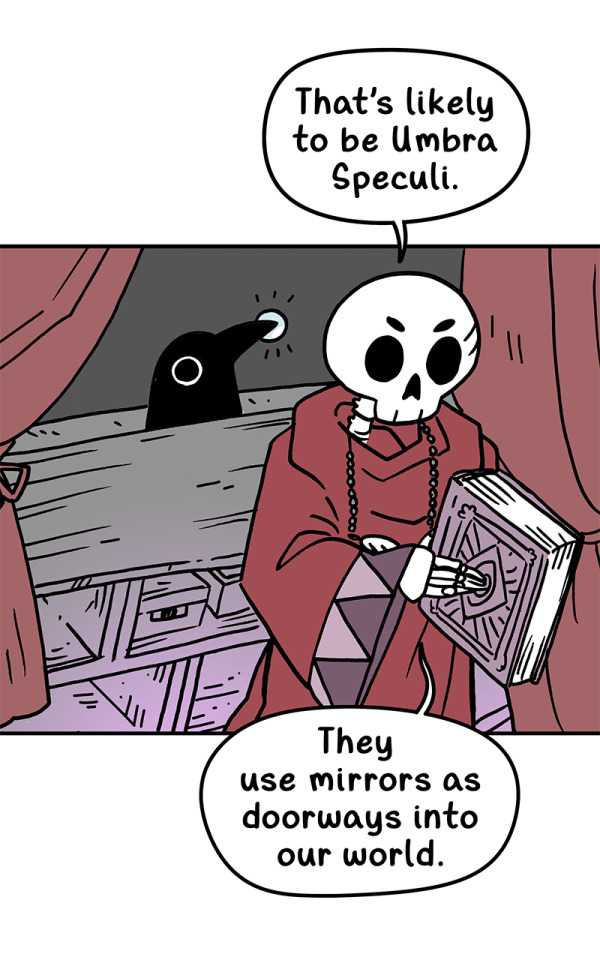




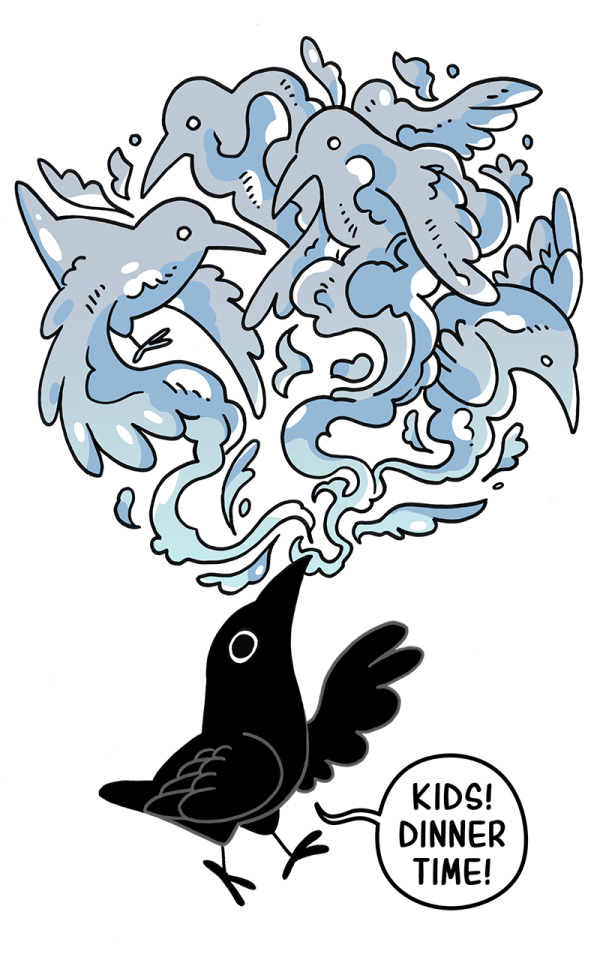

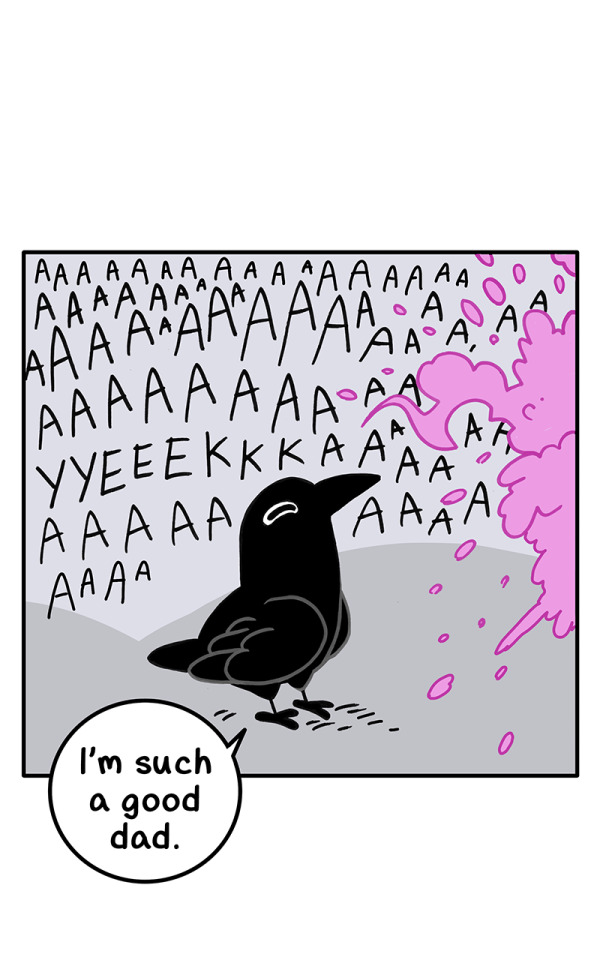

MIRROR, MIRROR PART 2 - The Daddening Continues.
{Check out my webcomics below}
PART 1 // Namesake // Crow Time // Store
#secondlina art#webcomic#webcomics#comic#crow time#webtoon canvas#webtoon#dungeons and dragons#mythology
21K notes
·
View notes
Text
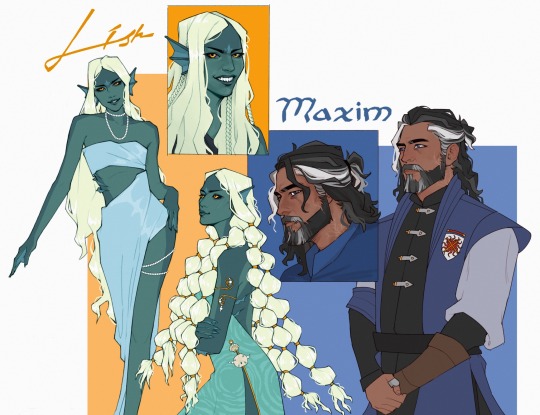
my d&d character and her long-term low-commitment casual boyfriend
#what if i was a triton bard based on mythological sirens 🤔 and you were a human storm sorcerer sailor 🤔#dungeons and dragons#dnd#dnd bard#dnd triton#dnd sorcerer#storm sorcerer#triton#d&d#triton oc#dawn of solaire#lorelai ishalath#lish#maxim kaldri#mars draws#dnd oc#dnd art
1K notes
·
View notes
Text

Andromeda by Arthur Rackham
#arthur rackham#art#andromeda#cetus#greek mythology#mythological#dragon#dragons#serpent#serpents#sea#mythical creatures#monster#monsters#beasts#damsel in distress#classical antiquity#ancient greece#ancient greek#europe#european#sea monsters#sea dragons#sea serpents#folklore#mythology
1K notes
·
View notes
Photo
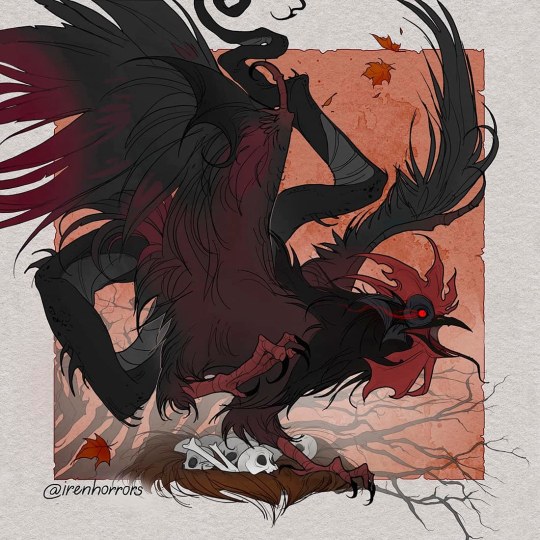
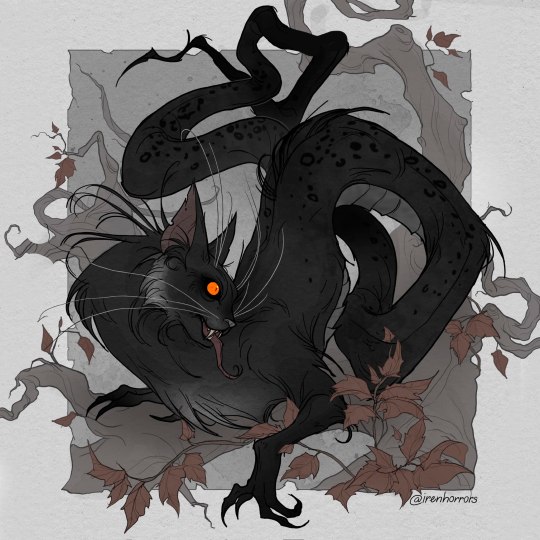
Basilisk and Tatzelwurm by Iren Horrors
3K notes
·
View notes
Text

Golden Cicada
#I love tang#He's the coolest normal old guy ever#“normal”#but compared to magic mystic monkeys#dragons#demons and mythological gods#he's the normalest one#lego monkie kid#lmk#digital art#lego monkie kid fanart#digital drawing#digital illustration#tang sanzang#lmk tang#golden cicada#lego tang#monkie kid
3K notes
·
View notes
Text



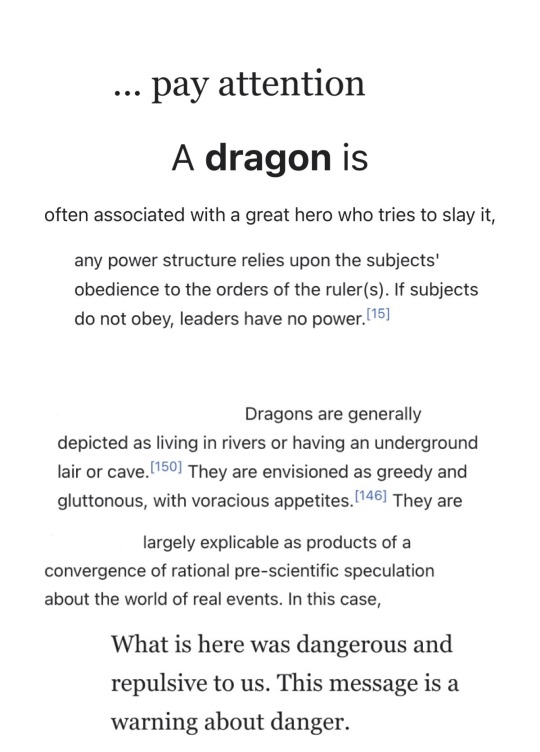
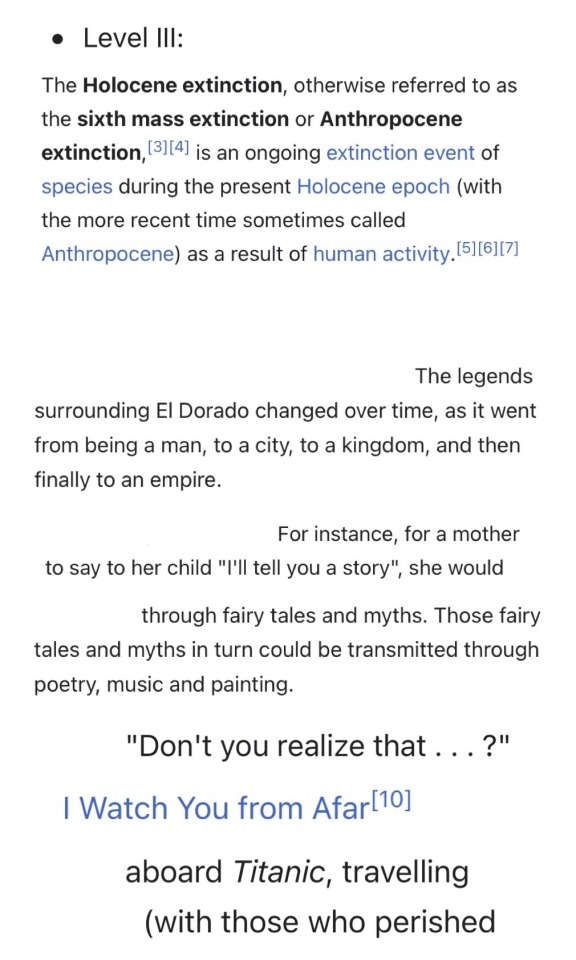
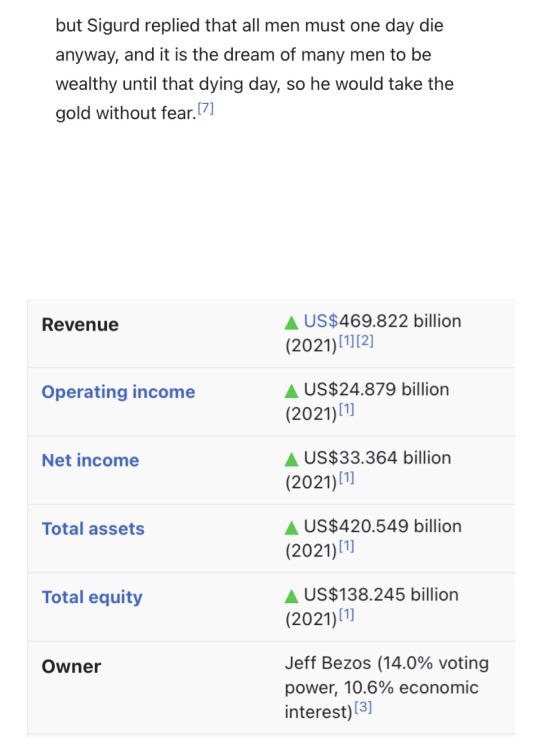
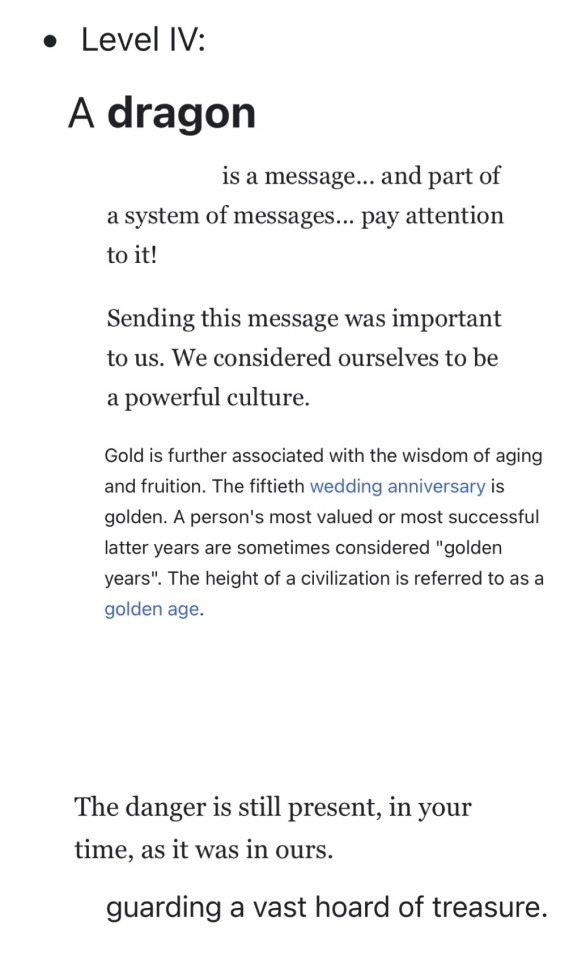
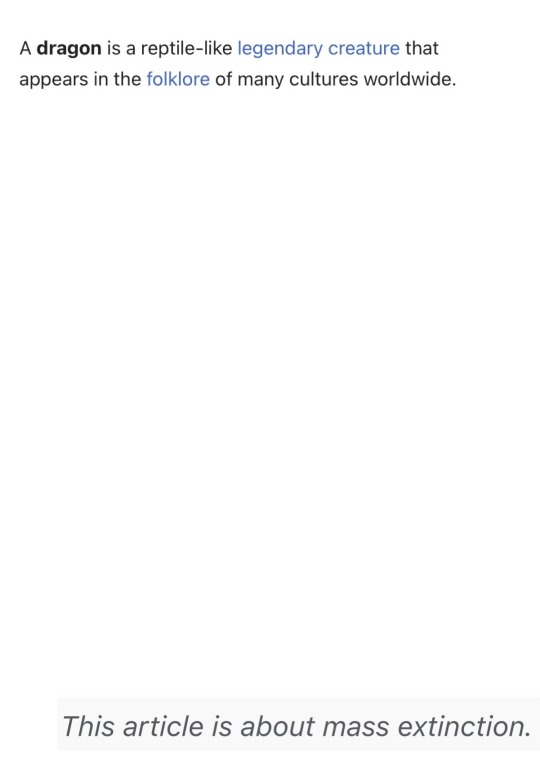
"Dragon," poem assembled using quotations from Wikipedia articles
#wikipedia poem#wikipedia poetry#climate change#dragon#mythology#long term nuclear waste warnings#mass extinction#poetry#poem#my writing#writing#wikipedia poems that prolong your background check#wikipedia#found poem#found poetry#found language poem
34K notes
·
View notes
Text
Dragons Around the World (part 1)
Africa

Ninka Nanka of the West African swamps
Aido-Hwedo of the Dahoney people of West Africa; creator and supporter of the world and can cause the end of the world
The Ethiopian Dream of Ethiopia
Isa Bere of Niger; bled the Niger River and body is said to be on the river floor
Australia and Oceania

Yulunggu of Australia, The Rainbow Serpent
Peke-Hara of New Zealand
Hotu-Puku of New Zealand
Middle East

Pakhangba or Metei Dragon of the Manipur people of India; great dragon lord, ruler and protector of Earth, destroyer of evil, creator of the universe
Akhekh of Egypt
Druk or Thunder Dragon of Bhutan
The Leviathon of Hebrew Mythology
Kur of Sumeria
Abrasax of Persia; considered a Supreme Being and origin of "abracadabra"
Apophis of Egypt; god of darkness and embodiment of chaos, the greatest enemy of Ra
Bahamut of Arabia; compared to Behemoth in Hebrew Mythology; holds the earth on its back, keeps the world together or plunges it into darkness
Illuyankas of Hitite Legend; weather god
Mertseger of Egypt
Yam-Nahar of Canaanite Legend; king of the sea, fights with the diety Baal
Zu of Babylonia
The Americas

Boitata of Brazil
Oyaleroweck of Canada
Mo-O-Inanea of Hawaii; mother goddess of all dragons
Kane-Kua-Ana of Hawaii; bringer of pearls and oysters to Eurs Lagoon (Pearl Harbor)
The Chelan Lake Dragon of the Chelan Indians of Washington
Coatlcue of the Aztecs
Kukulkan or Quetzalcoatl of Mesoamerica; god of creation; rain maker, wind blower and fire bringer
#witchblr#witches of tumblr#asian witch#witch community#dragons#world mythology#dragon#dragon mythology#kaijune
47 notes
·
View notes
Text

Lancelet
Illustration for the new edition of "The Mists of Avalon"
Nimue Morgaine & Mordred
Twitter | VK | INPRNT | Leave a tip
1K notes
·
View notes
Text

One of my first ever illustrations for Dungeons & Dragons has been revealed! Prints now available. For the upcoming Book of Many Things, AD: Bree Heiss
#illustration#watercolor#dungeons and dragons#d&d#d&d art#dnd#game art#ttrpg art#ttrpg#medusa#wizards of the coast#fantasy#fantasy illustration#fantasy art#mythology
1K notes
·
View notes
Text

'Dragon'. Witold Pruszkowski. 1896.
15K notes
·
View notes